Arbinger Institute's Blog, page 5
April 5, 2024
How to improve employee engagement: Strategies for a thriving workplace
The success of a business today is undeniably linked to its workforce, and it’s no surprise that organizations with engaged employees stand at the forefront of innovation, productivity, and success. But when it comes to exactly how to improve employee engagement—that’s where many organizations get stuck.
Considering the many challenges organizations face, including lack of accountability, misalignment, inefficiencies, and low morale, each organization’s workforce requires continuous effort and an ongoing commitment to building and maintaining a workplace that prioritizes employee engagement. Gallup defines employee engagement as the involvement and enthusiasm of employees in their work and workplace. Employee engagement helps measure and manage how your employees’ perceive key elements of your organization’s culture.
Addressing these issues requires a nuanced understanding of what differentiates an engaged employee from a disengaged one. Recognizing these differences is the first step toward developing a robust strategy for enhancing engagement and fostering a thriving work environment.
Identifying engaged and disengaged employeesEngaged employees typically exhibit as enthusiastic, proactive problem-solvers who consistently deliver high productivity. On the other hand, disengaged employees lack motivation, often prefer to work alone, and may avoid their responsibilities. While on the surface, disengaged employees may simply appear to be “difficult” or performing poorly, there may be a deeper issue at play. Recognizing disengagement is critical to developing strategies to improve it.
Every employer wants to have engaged employees who model effective collaboration, are dedicated to the organization’s goals, and possess the ability to generate innovative solutions. Engaged employees boost efficiency and infuse the company culture with energy, aiding in achieving strategic objectives. But the reality is some factors can impact even the best employees’ engagement levels. These can include things like:
When you understand what the signs of employee disengagement looks like, it becomes easier to understand how to improve employee engagement.
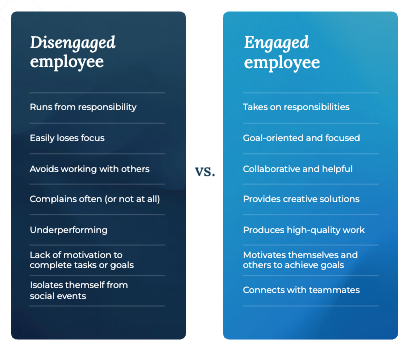
Below are a few examples of employee engagement in day-to-day work life.
An engaged employee is more likely to:
Share their ideas openly during a team meetingProactively anticipate issues and take initiative to find solutionsActively seek out opportunities to learn new skillsGo above and beyond to deliver great customer serviceApproach work with a can-do attitudeA disengaged employee may:
Display a decline in work quality, with increased errors or missed deadlinesHave a cynical outlook and resist change or new ideasShow a lack of initiative or enthusiasm for new projectsPut minimal effort into building relationships at workSeem withdrawn and disinterested in team activities or meetingsThe cost of disengagementAccording to recent data collected by Arbinger, employees who say they are satisfied at their organization are 3x more likely than others to work for companies that experienced significant revenue increases in the last year. Happy and engaged employees are signs of a successful organization, which ultimately means increased revenue.
If you’re curious about the cost of employee disengagement at your organization, use this formula to get an idea of what disengaged employees are costing you:
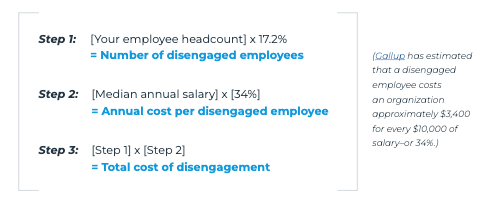
This figure helps underscore the tangible costs of disengagement, including lost productivity, increased absenteeism, diminished profitability, and the expenses tied to replacing staff. Beyond the bottom line, disengagement undermines organizational cohesion, dampens innovation, and accelerates turnover. Therefore, fostering an engaged workforce is not merely about enhancing profitability but about creating a cohesive, innovative, and enduring organizational culture.
How to boost employee engagementAcknowledge your team’s humanity: Recognize employees as individuals with lives outside work. Offering flexibility, empathy, and genuine concern can significantly boost engagement.Express appreciation: Cultivating a culture of recognition can motivate employees, increasing their productivity and loyalty. Simple acts of acknowledgment can significantly uplift morale.Value feedback: Soliciting and acting on feedback shows respect for employees’ insights, enhancing their sense of value and engagement.Foster psychological safety: Creating an environment where employees can voice ideas and concerns without fear fosters innovation and collaboration.Invest in development: Offering continuous learning opportunities demonstrates a commitment to employees’ growth, driving engagement and loyalty.Embody your mission and values: Operations aligned with core values inspire a sense of purpose and belonging among employees.Equip your team effectively: Providing the necessary tools and resources is essential for employee success and satisfaction.Promote social bonds: Encouraging social interaction among team members can strengthen relationships, enhancing communication and collaboration.Demonstrate trust: Empowering employees to take initiative and make decisions can foster a sense of ownership and engagement.Prioritize transparency: Open communication about the company’s direction and challenges makes employees feel valued and included.Leadership impact on employee engagementEmployee engagement thrives on a foundation of mutual trust and responsibility. Impactful leaders who set clear expectations and empower employees to take ownership create an environment where individuals feel valued and motivated. This, in turn, fosters collaboration, as team members who are accountable are more likely to rely on and support their colleagues.
After all, a culture of accountability breeds proactivity. Employees who take ownership are more likely to anticipate challenges, solve problems independently, and suggest improvements—all contributing to a more engaged and high-performing team. The cycle is cyclical. Engaged employees, taking initiative and collaborating effectively, alleviate some of the leadership burden, allowing leaders to focus on further empowering their team. This, in turn, strengthens accountability and fuels a continuous loop of high performance and engagement.
Pet Food Express’ recipe for success
Pet Food Express isn’t your average pet store. Founded in 1982, they’ve grown from 6 to 63 stores by focusing on two things: high-quality pet food and a fantastic team.
They realized their strong company culture was their secret weapon. It’s all about teamwork, great customer service, and having fun. Employees are empowered to make decisions and managers encourage open, honest feedback—because happy employees mean happy customers.
This approach has paid off. Amy Vargas, a district manager, says it’s led to a culture of trust and helped them stay ahead of the competition.
Key takeaway: By investing in its people, Pet Food Express found the perfect recipe for success.
Watch their story here:
The importance of fostering employee engagementHappy employees mean a successful business. Here’s how:
Value everyone’s ideas. Recognize what each person brings to the table.Make everyone feel welcome. Build a team environment where everyone feels included.Help people grow. Invest in training and development for your employees.This doesn’t just boost short-term profits. It creates a stronger company culture, sparks fresh ideas, and helps you win in the long run. Equipping your employees with the latest skills and knowledge through training and coaching programs further fuels this cycle. By investing in their development, you empower them to be more productive, innovative, and engaged, ultimately driving even greater success for your company.
The bottom line is, invest in your employees, and they’ll invest in your company’s success.
Check out Arbinger’s latest trends report to see how to bring more humanity to work and further improve employee engagement.
 hbspt.cta.load(23346030, 'bdeb1367-d9ea-4975-abcd-0eec52f20413', {"useNewLoader":"true","region":"na1"});
hbspt.cta.load(23346030, 'bdeb1367-d9ea-4975-abcd-0eec52f20413', {"useNewLoader":"true","region":"na1"}); The post How to improve employee engagement: Strategies for a thriving workplace appeared first on Arbinger.
March 27, 2024
Unleash potential: How diversity can drive innovation at work
In a digital era where AI and data are abundant, the ability to think critically and innovate is not just an advantage; it’s essential for survival and success. The key to unlocking this innovative potential lies not in technology or strategies—but in people. Specifically, it hinges on creating an environment enriched by psychological safety. Let’s explore how diversity can drive innovation and catalyze an unstoppable force of creativity at work.
Embrace diversity beyond demographicsResearch suggests that diverse teams are better at problem-solving and produce better outcomes. They can approach challenges from multiple angles, considering factors that a more homogenous group might overlook.
Diverse teams bring a vast array of experiences and viewpoints to the table, expanding the horizon of possible solutions. This variety leads to a creative synergy, where ideas are not just linear but multidimensional, paving the way for innovations that are both novel and impactful.
The challenge then becomes not only creating a culture of inclusion and belonging, but creating a culture where everyone feels comfortable and empowered to speak their mind.
As Arbinger’s Director of Diversity and Inclusion has said, “If inclusion is something people have to do, they will resist. Introduce them to the benefits, like creating greater psychological safety, which creates greater team dynamics and innovation.”
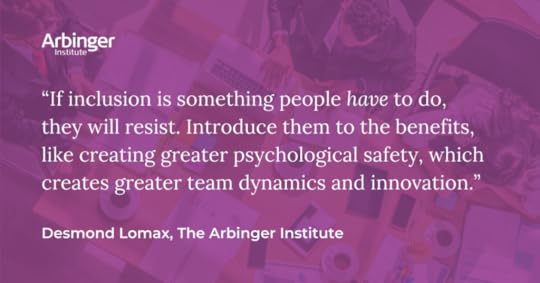
Unleashing potential starts with understanding that diversity goes beyond mere demographics. It’s about embracing a kaleidoscope of experiences, thoughts, and perspectives. Encourage an environment where every voice is heard and valued regardless of origin. This type of inclusivity nurtures a culture of psychological safety and creates fertile soil where seeds for innovative ideas can flourish.
Diversity alone, while a crucial ingredient in the innovation mix, is not a standalone solution for creating an environment where innovation can truly thrive. It’s akin to having a seed but not the fertile soil, sunlight, and water needed to grow it into a flourishing plant. The seed represents diversity—a collection of unique perspectives, experiences, and ideas. However, without the nurturing environment provided by psychological safety, the full potential of these diverse seeds cannot be unleashed. Let’s delve into why diversity needs the complement of psychological safety to truly foster an innovative environment.
Watch this short video to hear Arbinger’s Managing Partner, Mitch Warner, explaining this toxic soil metaphor in more detail:
The limitations of diversity without psychological safetyDiversity brings together varied perspectives, but without a culture that encourages open expression, these perspectives can be received through a lens that is biased, go unheard, or even be suppressed.
Most individuals are reservoirs of innovative ideas, yet often, these ideas remain unshared and untapped, not due to a lack of opportunity but because of fear. Fear of judgment, ridicule, and rejection can muzzle the voice of innovation, stifling creativity at its source.
Equally, the apprehension of being perceived as negative prevents many from speaking up about problems that, if addressed, could lead to significant improvements or groundbreaking solutions. This silence is a loss for the individual’s growth and a profound missed opportunity for organizations.
It’s disheartening when these individuals, brimming with potential and unexpressed ideas, move on to seek other environments where their contributions are valued—starting their own ventures or moving to organizations that foster a culture of psychological safety and appreciation for innovation. In this way, organizations lose out on immediate innovative solutions and the long-term.
For this reason, it’s critical for leaders to work to foster a culture of psychological safety. Ron Thompson of NASA shares:
Champion psychological safety“As a leader, it’s not always about what you do, but how people felt when they were engaging with you. To retain talent and attract more, focus on making people feel valued—and it is truly amazing what the team will accomplish … We recently did the Outward Mindset course at NASA, which is focused on shifting from thinking about yourself and your experiences to making more of an effort to see and understand others – their objectives, their needs, their challenges, and their circumstances.”
For diversity to truly unlock innovation, creating an environment of psychological safety is crucial. Team members must feel secure in voicing their opinions and ideas without fear of ridicule or backlash. When individuals feel respected and safe, they’re more likely to contribute their unique insights, leading to a richer tapestry of ideas and solutions.
Some ways to foster psychological safety in the workplace include:
Leaders set the tone: Show empathy, admit mistakes, and be approachable. Encourage participation: Actively listen to ideas and avoid shutting down discussions. Celebrate learning: Focus on growth over blame when mistakes happen. Respect diverse styles: Recognize that people communicate and work differently.
When you mix different backgrounds and perspectives, you inherently challenge the status quo. Diverse teams in a culture of inclusion are less likely to fall into the trap of ‘groupthink,’ where the desire for harmony and conformity stifles innovation. Instead, they question, debate, and dissect, driving the evolution of ideas that can disrupt industries.
In a global market, understanding and catering to diverse consumer needs is paramount. A team rich in cultural and experiential diversity is inherently more attuned to the nuances of different markets. This coupled with comprehensive analysis leads to the creation of effective products and services that are successful on a global scale.
Diversity, psychological safety, and innovation form a powerful triad for organizational growth and creativity. However, embedding these elements within an “outward mindset” elevates their impact, fostering an environment where collaboration, empathy, and collective success drive innovation to new heights.
An outward mindset, as described by The Arbinger Institute, involves seeing beyond oneself—understanding and valuing the needs, challenges, and objectives of others. It’s about shifting from a self-centered perspective to one that considers the impact of our actions on others and prioritizes collective goals over individual gains. This mindset—and seeing people as people, and treating them as such—is the very foundation for fostering psychological safety at work.

Enhanced collaboration through diversity: Diversity brings together a rich tapestry of perspectives and ideas. An outward mindset amplifies the value of this diversity by encouraging individuals to truly understand and appreciate the backgrounds and viewpoints of their colleagues. This deeper empathy and understanding fosters more meaningful collaborations, driving innovative solutions that consider a wider range of needs and possibilities.
Deepened psychological safety: Psychological safety allows for open communication and risk-taking without fear of judgment or reprisal. An outward mindset reinforces this environment by cultivating a culture of mutual respect and concern for each other’s success. When team members genuinely care for one another’s well-being and growth, they create a stronger, more supportive atmosphere where innovative ideas can thrive without the constraints of fear or negativity.
Collective innovation: Innovation is not just about coming up with new ideas; it’s about implementing them in ways that bring value to customers and the organization. An outward mindset ensures that innovation efforts are aligned with the broader goals of the organization and the needs of its customers. It encourages individuals to look beyond their immediate responsibilities and consider how their contributions fit into the bigger picture, leading to more impactful and sustainable innovations.
Incorporating an outward mindset into the foundation of diversity, psychological safety, and innovation creates a symbiotic relationship that propels organizations forward. It’s a mindset that transforms individual achievements into collective successes, where every member is engaged, valued, and driven by a shared purpose. By fostering an environment that prioritizes an outward mindset, organizations can unlock unprecedented levels of creativity, collaboration, and innovation, paving the way for a future where together, they achieve far more than the sum of their parts.
The fusion of diverse minds is not just a catalyst for innovation; it’s the very essence of it. Organizations can unleash their full potential by fostering a culture that values diversity and creativity, encourages inclusion and belonging, and champions psychological safety.
The future belongs to those who understand that infinite innovation is not just about new ideas but about bringing together diverse minds in a fertile environment that’s designed to make those ideas a reality. Let’s embrace and cultivate diversity in all its forms and watch as it unfolds the infinite possibilities of innovation.
 hbspt.cta.load(23346030, 'cbd92181-8746-4ff3-b1ab-f8b5905eca34', {"useNewLoader":"true","region":"na1"});
hbspt.cta.load(23346030, 'cbd92181-8746-4ff3-b1ab-f8b5905eca34', {"useNewLoader":"true","region":"na1"}); The post Unleash potential: How diversity can drive innovation at work appeared first on Arbinger.
March 13, 2024
Optimizing healthcare training programs: What to include to achieve success
Healthcare organizations are battling against some pretty stiff headwinds with funding reductions, staffing shortages, and all-time high demand for their services. These stressors can have a huge negative impact on organizational culture, causing reduced morale, increased conflict, and healthcare worker burnout. Many agree, there’s never been a more important time to implement healthcare training programs.
Healthcare ranked last among 27 other industries in employee satisfaction according to the 2023 Healthcare Experience Trends Report from Qualtrics. Implementing healthcare training programs to improve morale and engagement is critical to keeping employees engaged. However, it’s also tricky because:
Heavy workloads present serious logistical challenges for scheduling and implementing them. Stressed out, unengaged workers make it difficult to get their attention and drive change. Programs with the best intentions often miss the mark because they incorporate approaches that don’t fix the problem.We’ve been working with healthcare organizations for decades and understand the challenges you face. From our work with healthcare organizations like yours, we know that when it comes to patient care, failure is not an option, so any program to drive culture change and improve productivity must be focused on increased satisfaction by both employees and patients. With these goals in mind, here are the attributes of programs we have found to be the most successful.
1. Be flexibleEveryone is busy, but healthcare workers are uber-busy. Every moment in training is time away from patient care, so expecting a team of people to sit in a room for days is often not a practical approach. However, some of the most intractable people problems can only be solved when people convene and talk it out. Overburdened coworkers with divergent goals are likely to have conflict, and simply put, you need face time to overcome it.
Organizations have tried multiple approaches to resolve this issue, but in our experience, the best approach includes the following components:
In-person or live virtual sessions that are flexible enough to meet various scheduling options. Some organizations may be able to schedule a couple of consecutive days for healthcare training programs, while others can only spare a couple of hours a week. Any program must be adaptable to your schedule. While group activities are essential, the training content itself should also be available on demand so that participants can consume it according to their own schedules. These two modalities—live and on-demand—should be combined so that on-demand sessions are for absorbing concepts and preparing for live gatherings. This “flipped classroom” approach—where live sessions are focused on the application of training in the real-world scenarios that your workers face every day—has been shown to be the best way for people to internalize information because they can consume the training on their own but talk about its application in live sessions where they can interact with coworkers.This approach affords the most flexibility for healthcare workers while still providing robust subject matter and the opportunity to “dive in” during live interactions.
Look at this short video to see how we structure healthcare training programs for clients in this way:
2. Drive engagement with real-world examplesThe impact of healthcare training programs is directly proportional to the relatability of the material and the way it’s delivered. Asking busy healthcare workers to apply abstract concepts to their day-to-day activities will erode the results you’re looking for, particularly if people are stressed out and not fully engaged.
That’s why it’s so important to cover essential topics with real-world examples explained by those who lived them. With bite-sized vignettes that depict people who were going through and overcame similar challenges, the concepts you’re trying to get across will resonate far better than written material, simulations, or some other modality.
Focusing on video also facilitates the kind of on-demand approach to training that we mentioned earlier: people can view these vignettes at their convenience and then meet together to talk about how they apply in their workplace.
3. Focus on the root cause of the problemMost healthcare training programs focus on the symptoms of a problem rather than the root cause. As in healthcare, treating the symptoms is essential, but getting at the root cause is critical. For example, you can’t fully remediate the tension between physicians and administrators by implementing new processes; success hinges upon their willingness to work together as a foundation for change.
In this video, we talk about the idea of planting a seed in toxic soil. See how it relates to your organization’s culture:
This is important because when stress increases, it’s easy to think of others as obstacles or impediments to your own success. For busy healthcare workers, administrators may seem like obstacles requiring undue red tape that takes away from patient care, and administrators may see those workers as impediments to improving reimbursement flows rather than success.
For busy healthcare workers, administrators may simply seem like obstacles who are requiring undue red tape that takes away from patient care, and administrators may see those workers as impediments to improving reimbursement flows rather than people. These seem like obstacles who are requiring undue red tape that takes away from patient care, and administrators may see those workers as impediments to improving reimbursement flows rather than people. These kinds of animosities are the foundation for poor employee survey results and low patient satisfaction scores.
The root cause of these conflicts—and the foundation high-impact healthcare training programs—is mindset. Research has shown that focusing on mindset first will provide better results. When you think about the kind of healthcare training programs you want to deliver, start by helping participants understand the mindset that underlies the behaviors and conflict you’re trying to remediate. Incidentally, those real-world examples and live discussion sessions are perfect complements to a mindset-focused training approach.
Looking aheadThese three recommendations—schedule flexibility, real-world examples, and a focus on mindset—are borne of our decades of experience working with clients in healthcare and dozens of other industries. In healthcare alone, our customers have seen significant declines in attrition, reductions in employee HR complaints, and substantial increases in both employee and patient satisfaction.
We’ve worked with healthcare professionals from large hospitals to small practice groups, helping them identify ways they can collaborate more effectively to achieve the results they expect and need.
To find out more, please schedule time to speak to an Arbinger healthcare specialist.
The post Optimizing healthcare training programs: What to include to achieve success appeared first on Arbinger.
Treating healthcare worker burnout: Practical insights for boosting morale and engagement
Anyone in healthcare doesn’t have to be told that it’s a challenging time. With too many patients and insufficient resources, it’s no surprise that healthcare worker burnout is happening on an unprecedented level. The good news is that there are some practical ways to turn down the volume of burnout by taking an organizational approach to improving morale and engagement among healthcare workers.
Burnout in healthcare workers is rooted in the convergence of several factors: reduced government funding to pay for critical resources, an aging population, and an insufficient supply of healthcare workers. It’s no wonder that 76% of healthcare workers report feeling burnout—and these burnout factors will not abate anytime soon.
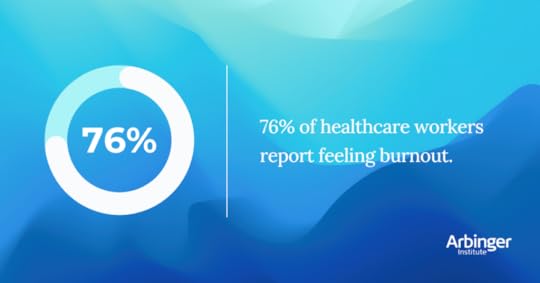 On the verge of conflict
On the verge of conflictNaturally, these stressors cause conflict in the workplace. Hospitals need faster reimbursements, which pits administrators against healthcare workers to fill out paperwork more quickly. It’s one reason a Medscape study found that “too many bureaucratic tasks” was the top reason for physician burnout.
At the same time, greater demand for healthcare results in long waits and shorter visits, putting frontline healthcare in a position where they’re playing catch-up constantly. This pits physicians against nurses and office workers in a race to cycle through as many patients as possible. And patients often get lost in the shuffle, which may explain why an Ipsos survey found that 43% of American patients today are unhappy with their healthcare systems.
With all of these pressures working against them, it’s not surprising that morale and engagement are low; the second-most cited reason from that Medscape study was “lack of respect from co-workers.”
Moral injuries can be mortal injuries for healthcare careersTime and resource limitations have caused many healthcare workers to question whether what they’re doing today still aligns with the reason they chose the profession to begin with:
Are they providing a satisfactory standard of care? Are they delivering equitable treatment to all patients? How have financial motives affected their ability to do their jobs?These moral injuries—slow but steady deviations away from their sense of purpose—can significantly affect morale and engagement. If people no longer feel that they’re fulfilling the goal of helping people first and foremost, healthcare workout burnout is a near-certain byproduct.
Considering that 38% of respondents in a recent Arbinger survey reported that “meaningful work” is a key factor in their job satisfaction, it’s clear that these feelings of separation from purpose are impacting healthcare workers in a big way.
How one hospital handled healthcare worker burnoutAs described earlier, it’s natural for healthcare worker burnout to cause workers to see patients as participants in a numbers game rather than humans. However, one hospital realized that they needed to make a change.
Without a mindset that puts other people first—patients, coworkers, etc.—it’s hard for burnt-out healthcare workers to see the humanity in what they do, leading to both patient dissatisfaction and burnout. Conversely, helping them regain a mindset that recognizes the impact of their work on others helps to improve both job satisfaction and quality of care.
Regions Hospital in St Paul, MN, was overwhelmed with patients and work, making it difficult for some of their staff to focus on individual patients and their needs, and patient engagement survey results demonstrated that this mindset—get the work done first and foremost—had a negative impact on patients’ perceptions of their care.
They knew that performing care efficiently and processing claims quickly was still important, but they also recognized the need to take an organization-wide approach to refocusing their workers’ mindsets on the needs of patients first, even in the context of their packed schedules. As a result of mindset-focused training, workers started collaborating more to help each other, increasing efficiency, and their patients, increasing quality of care.
As a result, engagement scores improved across the board because both the speed and quality of care improved—and patients felt like they were being treated as people rather than obstacles in someone’s workday.
Watch their story about how they turned around healthcare worker burnout at Regions Hospital here:
The role of mindset in morale and engagementMindset plays a key role in how people treat each other, and yet it’s easy to ignore the humanity of coworkers and patients when you’re under stress. It’s critical but challenging to remember that the people around you deserve the same respect and dignity with which you hope to be treated. This is especially true in a healthcare setting, when patients may need that human touch to allay their concerns.
When healthcare workers develop a mindset to help others over themselves, many changes occur that increase the speed and quality of care. For example:
A nurse checking on an alarm for a patient isn’t her responsibility; knowing that team coverage of alarms can help ensure patient safety. A physician recognizes that a nurse who corrected his mistake was helping a patient rather than challenging his authority. An administrator works with physicians to identify opportunities to reduce unnecessary paperwork, giving them more time with patients while improving workflow.Research has shown that treating patients with dignity, understanding, and optimism results in better outcomes.
Think of this approach to mindset and then reconsider the factors that lead to poor morale and engagement. With a concerted effort toward mindset shift, organizations can help healthcare workers refocus their efforts on patient care, cooperation, and collaboration. Putting mindset first diminishes the stressors that lower morale and reinforces the sense of purpose that drove people to healthcare careers to begin with.
By fostering a work environment where people want to help each other and their patients, organizations can reduce healthcare worker burnout and moral injury. That change—and the improvements in productivity, attrition rates, and patient satisfaction that accompany it—is only possible with an organizational commitment to a shift in mindset.
Learn more about how you can transform the dynamics at your healthcare organization and make the necessary changes to reduce burnout and boost employee morale here.
The post Treating healthcare worker burnout: Practical insights for boosting morale and engagement appeared first on Arbinger.
February 21, 2024
Belonging at work: What to include in diversity, equity, and inclusion training
Making the investment in diversity, equity, and inclusion training to foster belonging at work is no longer a nice-to-have for organizations, it’s table stakes. Arbinger research has found that 71% of best-in-class organizations prioritize DEI training compared to just 34% of all others. So naturally, if you’re an organization that’s looking to foster a thriving and innovative culture, it’s simply a must.
That being said, with so many DEI solutions on the market, it can be challenging—if not downright overwhelming—to find the “right” option for your organization that’s actually going to make an impact. We’ve shared our take on why most DEI training programs don’t work, and it comes down to the fact that most diversity, equity, and inclusion training focuses on modifying behaviors for compliance, rather than getting to the root cause of bias, which is mindset.
In this blog post, we’re going to explore what to include in DEI training to make an impact—based on our own proven experience working with thousands of clients worldwide.
True belonging at work starts with mindsetMindset is the driving force behind peoples’ attitudes, behaviors, and perceptions towards diversity-related issues, so it only makes sense for it to be at the heart of DEI training. The thing is, most DEI training programs don’t even mention mindset at all.
Without addressing mindset as the root cause of bias, stereotyping, or inequities, we’re really only treating the “symptoms” of a much deeper issue. Look below to see some of the symptoms that might be affecting your organizational culture.
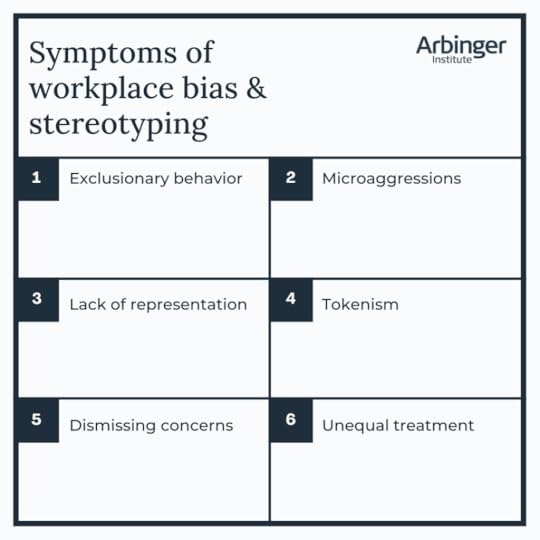
Rather than simply treating the surface-level implications of workplace bias, it should be our goal to establish an atmosphere of true belonging. It’s only then that we can watch connection, collaboration, and innovation transform as people thrive.
To do this, you’ll need to do the following:
1. Invite people in rather than calling them outMany DEI training programs are centered around compliance: what you can and can’t say or do. The issue with this is that prescribing behaviors doesn’t really change anything other than how people act. It’s not influencing how they see themselves or those around them.
From our work with clients, we know that tools and frameworks are effective ways to operationalize challenging conversations or exercises. So, one that proves really effective during DEI training is our Bias Self-Assessment tool.
With this exercise, we invite participants to discover their own biases by examining themselves first. Whether we’re aware of it or not, there are aspects of all of us that we’ve learned to view as better or worse than others. Perhaps you view your nationality as an advantage. What messages have caused you to shape that bias? Maybe you view your age as worse than others. What’s been the impact of that way of thinking in your day-to-day interactions?
Download a copy below to try this exercise for yourself and see how many unconscious biases are present in your life.

After completing the exercise, take a moment to think about why it works. Rather than accusing or blaming others for their perceptions, we’ve empowered them to examine their own biases and uncover in real time how they’ve impacted their lives.
2. Challenge people to see differentlyOnce you get people to examine their own biases, the next step is to challenge people to see things differently. Many stereotypes and biases are deeply ingrained, and it’s only when they’re brought to light that people are forced to challenge them. Sometimes, people choose not to see what they don’t understand, and the role of diversity, equity, and inclusion training should be teaching them how to see those things.
This video is a great example of how biases can get in the way of seeing something for what it really is:
In order to more effectively see, we have to listen and learn.
Listening, asking questions, and getting curious is key to connecting others—especially from those who are different than us in some way. It’s only way for us to really see someone. Otherwise, we just go on with what we already think we know.
For this reason, working to shift perspectives and teaching people how to more effectively listen to others is something that sets an impactful DEI training program apart from the rest. At both work and at home, we can always work to listen better, dispelling discrimination, prejudice, misconceptions, and fear.
We suggest three key areas to focus on when listening to others:
Listening to learn about the personListening to learn from the personListening to learn how I may be mistakenListening with these three areas in mind help create a deeper connection between the listener and the person being listened to. When we hear things we haven’t heard before, we begin to really understand the other person, and how the other person feels that they and their views are important.
Failing to listen and learn from those around us gets us stuck in our ways and our own beliefs.
Below is just one example of how stereotypes and misconceptions can creep into even the smallest parts of our day-to-day lives, and how that impacts our way of thinking about, and ultimately seeing, others:
Videos (like the examples shared above) are a great way to get people thinking about other perspectives, and help evoke empathy during diversity, equity, and inclusion training. They challenge us to see things differently by listening to someone speak openly about their experiences. By nature, humans love stories. So video examples that allow us to see the humanity in others are typically a lot more effective in teaching people to listen than simply talking through concepts.
3. Foster psychological safetyFostering psychological safety is a crucial component of diversity, equity, and inclusion training as it forms the bedrock for inclusive learning environments. When individuals feel safe to express themselves without fear of judgment or reprisal, they’re more likely to actively engage in discussions and activities that create deeper understanding and empathy with their colleagues.
To foster psychological safety in DEI training environments, we suggest facilitating breakout groups for discussions. You can break people into groups to discuss a video, answer a question, or work through an exercise. The key is to keep the groups small so that people feel safe to share. It can be intimidating to get vulnerable in front of a large group of coworkers, but sharing thoughts in a small group of two or three is much more approachable.
Integrating psychological safety into DEI training ensures that participants from diverse backgrounds feel respected and valued, creating a conducive atmosphere for learning and growth. Without it, there’s a risk of perpetuating power dynamics and marginalizing certain voices, undermining the effectiveness of the training. swapping blame for curiosity, timely, consistent recognition, and room for experimentation because fear of failure can be a barrier for individuals to take risks, speak up, and bring new ideas to the table.
Fear of failure can be a barrier for individuals to take risks, speak up, and bring new ideas to the table, so in order to foster more innovation, your DEI training program should empower employees to swap blame for curiosity, implement consistent recognition, and make room for experimentation.
Without psychological safety, employees may hesitate to fully engage in their work, leading to decreased morale, productivity, and ultimately hindering the organization’s success. Prioritizing psychological safety creates a foundation for diversity, equity, and inclusion initiatives to thrive, fostering a positive and supportive work environment for all employees.
Transform team dynamics with effective DEI trainingWhen people feel safe to speak up, understand how to listen, and know how to examine their own biases, it promotes open communication and collaboration, leading to increased creativity and innovation within teams. The ways in which your team will be changed by incorporating belonging at work are truly transformative to all areas of your organization. It starts in small steps, and it can start as early as today.
The post Belonging at work: What to include in diversity, equity, and inclusion training appeared first on Arbinger.
Why most DEI training programs don’t work
On the surface, organizational challenges can look like they come in many shapes: lack of accountability, low employee engagement, miscommunications, conflict or resistance, to name a few. But really, these seemingly distinct issues are interconnected symptoms of one central challenge: how individuals approach their roles within the workplace.
Often, DEI training programs fail because they prioritize directing employee behaviors instead of addressing the root of unhelpful biases.
We think Arbinger’s Desmond Lomax says it best: “People don’t change because they feel guilty. Your culture won’t change unless you focus on changing the dehumanizing beliefs and behaviors that are holding your people back.”
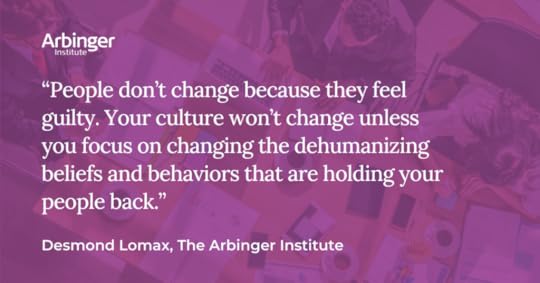 Where most DEI programs fall short
Where most DEI programs fall shortIn most cases, DEI programs lean toward two approaches: compliance and behavior prescription. Compliance initiatives often fixate on meeting percentages and ratios to portray diversity and equity, while behavior-prescribing methods dictate right and wrong actions to avoid legal repercussions.
The issue is, neither approach fosters genuine inclusion. Even though behavior change might seem like it’s driving the results you’re looking for, the reality is that it’s just creating tolerance. No one wants to be tolerated—toleration doesn’t create belonging. Mindset is what determines how we see ourselves and how we see others, which ultimately leads to the behaviors we engage in. Take a look at the image below to see how mindset sets the foundation for behavior and ultimately, organizational culture.

Without creating an environment of inclusion and belonging, compliance and policy enforcement prove insufficient, leading people to cling to their existing biases, getting in the way of actual organizational change.
Even the most well-intentioned DEI efforts fall short because of inherent human tendencies. People have a natural tendency to underestimate (or entirely disregard) the needs and objectives of others while prioritizing themselves. With this inward-focused mindset, people tend to forget to see other people as people who matter just as much as they do—which is what lies at the heart of true inclusion and belonging.
Recognizing the humanity in othersOur ability to change depends on our readiness to truly connect with the people around us. To effect change, you have to transcend stereotypes and biases, dismantling the walls, scripts and self-justified narratives that degrade or diminish others.
Successful DEI training programs excel in cultivating a culture that fosters open, sincere and introspective conversations. These are the types of dialogues that can amplify eagerness and motivation to collaborate—enhancing overall engagement, retention, and success.
Skimming the surface and avoiding the root issues only exacerbates problems, as this often betrays an underlying fear or desire to placate without genuine concern. Real progress demands sincere commitment and hard work.
Below, we highlight what works (and what doesn’t) when it comes to fostering inclusion.

For a lot of people, dealing with feelings and relationships can be harder than dealing with numbers or facts. Leaders and managers need to be ready to spend time and energy working on these kinds of issues, like thinking about themselves and admitting mistakes. Diversity, equity, and inclusion (DEI) work isn’t about blaming people or making excuses for behavior. It’s about creating a place where everyone can do their best work. Until organizations are willing to do this, they’ll struggle to build a fair and inclusive culture.
If talking about diversity and inclusion feels challenging to you, it’s important to remember that your organization already has diversity. Watch this short video from our Director of Diversity and Inclusion, Desmond Lomax, in which he talks about how to celebrate diversity when it feels like an uncomfortable topic:
Employees operating with a self-focused or inward mindset lack consideration for how their actions and attitudes affect those around them. An inward mindset is a way of seeing ourselves that keeps us focused on our own needs, wants, and goals—often at the expense of others. This perspective places our personal desires above all else, limiting concern for the thoughts and emotions of others to the extent that they serve individual goals.
When it comes to DEI training programs, it’s important to consider how an inward mindset not only hinders collaboration, but also perpetuates unconscious bias, leading to exclusionary practices within organizations.
By fostering an outward mindset, individuals can develop a genuine appreciation for diversity and actively seek ways to dismantle systemic barriers. The key difference between an inward mindset and an outward mindset is the focus of our attention: an inward mindset is focused on ourselves and our own needs, while an outward mindset is focused on others and their needs.
Shifting our mindset is crucial for building strong relationships, fostering trust and collaboration, and achieving better outcomes for all involved. This change in perspective not only benefits the individuals themselves but also creates a ripple effect, positively influencing workplace dynamics and fostering an inclusive culture that values the contributions of every employee.
It’s impossible to train away behaviors themselves without examining and addressing the underlying mindset behind problematic behaviors. Recognizing the critical role of mindset is fundamental to bringing about substantial change across companies. To establish a culture that truly embraces DEI, a fundamental shift is necessary, and it goes beyond simply adjusting behaviors.
Setting a baseline for DEI training program success
Understanding how mindset affects DEI training programs is essential to their success. What’s most important to understand is how our mindset can either help or hinder our efforts to make positive changes. When we try to understand and assist others instead of blaming them or feeling defensive, we’re going to see more impactful (and lasting) results. Approaching conversations with empathy, actively listening, accepting feedback, and recognizing that the success of a group depends on everyone’s input, are simple actions that the success of your DEI training program hinges on.
It’s also important to recognize that this goes beyond the individual level. Organizations must also prioritize creating a supportive culture that prioritizes seeing other people as people. This may include implementing mentorship programs, training on empathy and active listening, and integrating diversity and inclusion goals into performance evaluations. By integrating this way of thinking into daily practices, organizations can create a more holistic approach that addresses both individual mindsets and systemic biases.
Bringing about lasting change
Conventional DEI programs often fail because they only scratch the surface, not getting to the root of the problem: mindset. We should all be seen as valuable individuals, but too often, we view others as obstacles. To truly change your organizational culture, you need to address the harmful beliefs and behaviors that hold people back. Organizations need to confront the implicit biases at their source. By shifting mindsets, organizations can pave the way for real change to create inclusive workplaces that embrace diverse perspectives and make everyone feel valued and included.
The post Why most DEI training programs don’t work appeared first on Arbinger.
February 13, 2024
Bell curve gone bad: A new practical approach to employee performance management
It’s been widely debated that using the performance management bell curve approach unfairly represents employee performance, yet many organizations have clung to this seemingly outdated way of ranking employees. But is there a better way? We explore how the bull curve approach is limiting—and what organizations should focus on instead.
The performance management bell curveA bell curve shows a “normal distribution,” which means a typical pattern in data. It represents a group where most values are clustered around an average, with an equal number above and below that average. Many organizations use this curve as a way to rank employees and distribute promotions and raises. A bell curve approach to performance management, often referred to as “forced ranking,” requires managers to score their employees from lowest to highest performing.
The thing is, this model assumes that there are roughly the same number of people above and below average performance. We’re also assuming only a few individuals would be significantly different (either much higher or much lower). But we all know employee performance doesn’t work like that.
There are a few obvious problems with assuming real employee performance is distributed in this way. For one, when managers are required to rank employees on this curve, there’s only space for only a few “top performers.” Even if you’re working with a top-notch team, some people are still going to have to get labeled as “low performers” by comparison.
Secondly, it lacks focus on employee development. This type of ranking system places more focus on rewarding or correcting past performance, rather than developing a plan for employees to get to the next level of success.
Another reason this approach misses the mark is because it doesn’t take into account humanity in the workplace. An organization made up of top performing employees is entirely possible when you see people as people, but this ranking system doesn’t allow for that.
Reevaluating employee performance managementIn an ideal workplace, we want our employee performance distribution to look like this:

And this is entirely possible when we stop “bell curving” performance and start looking at this activity as a way to help employees develop in their careers and within your organization.
So if your employee performance management appraisals look something like this:
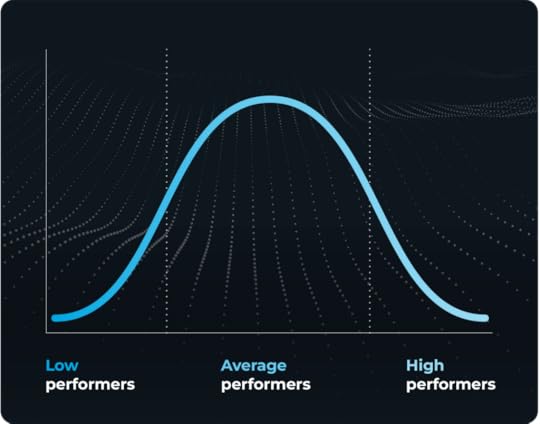
And you want to move people through towards high-performance, like this:
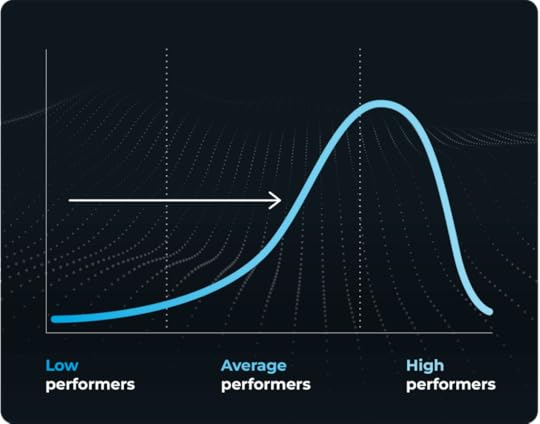
The first thing you need to do is start looking at employee performance differently. A person’s performance is not a data point that you plot on a chart for your executive team to review, it’s reflective of each employee’s experience with your organization. And spoiler alert: There’s a lot leaders can do to influence that performance and change it for the better.
If an employee is a “low performer,” it’s rarely as simple as them being “careless” or “lazy.” While lack of knowledge or aptitude are possible causes, it’s also important to remember that these people were hired for a reason, and there could be other factors at play. Here are a few potential causes of low performance:
Their responsibilities aren’t clear. It’s difficult for someone to excel at their job if they feel the lines of what they’re responsible for are blurry. As a leader, take the time to ensure each employee understands exactly what’s expected of them and how their success is measured.They’re frustrated or disengaged. If a strong employee feels like their efforts are met with resistance, barriers, and challenges, it’s going to look like they’ve given up. Are you clearing the path for your team members and helping them maneuver obstacles?They lack tools or skills to do their job effectively. An employee who is poorly equipped to do their job (whether they lack resources, equipment, or training) is going to underperform. What can you do to ensure they have what they need to do their job well? They feel unappreciated. Feeling unappreciated is among the top three greatest contributors to feeling stress or burned out at work. What efforts do you have in place to show employees that their work is valued?Sometimes, however, people do understand the performance standard—and have all the tools to do their jobs effectively—but are unable to do so. In that case, below are some examples of how you can approach those employee performance conversations.
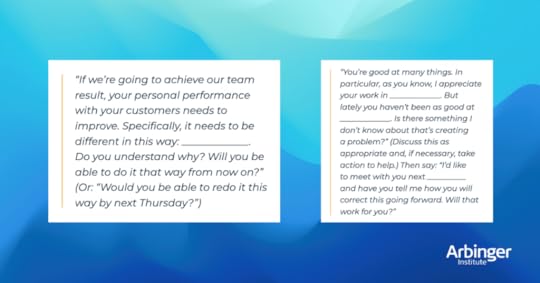
We recently talked about the 8 traits of a high-performing employee and how to develop those specific traits in your workforce. As a recap, high-performing employees are:
AccountableSelf-awareCollaborativeCommunicativeAdaptableReliableProactiveMotivatedWhile some people might be more naturally inclined towards some of these skills, the reality is that they’re all competencies that can (and should) be nurtured at work. Ask yourself, as a leader, are you doing everything you can to help your employees succeed?
Headwinds and tailwindsWhen talking about performance, it’s also important for us to be conscious of our own headwinds and tailwinds—and how perception can play a role in how we perceive someone’s performance. Privilege, for example, is like having a tailwind. It doesn’t mean that you’re not trying or working hard, it simply means that you may be blind to how certain aspects of your life have helped to move you along. So, while another person may be working just as hard as you, they may be facing headwinds, the disadvantages and hardships people face in life and work that prevent them from moving at the same rate.
The real truth is we all have headwinds and tailwinds. If we focus on the fact that people have different experiences, and in seeing them as people we can have compassion for those experiences, even if we can’t fix it, we can be helpful. Consider the factors in your own experience—and in the experiences of others—that contribute to both achievement and challenge. When we have a “better than” bias, we don’t see the circumstantial factors at play with the success we’ve experienced and the challenges that others face.
Performance on a scaleRather than looking at performance on a curve, we should look at employee performance management as a scale. There are low performers, average performers, and high performers, but the goal should always be to move employees to (and keep them in) the high-performer category.
Instead of creating competition between employees, a performance scale ranking system puts no limit on the amount of top performing employees, and reinforces the mindset that other people and their goals matter just as much as the individual drive to succeed. Organizations and its leaders can nurture people across the spectrum and build a high-performance culture that maximizes the potential of your people.
With this outward way of thinking, employees naturally want to be helpful to one another, so they’ll adjust their own efforts to make their work easier. Rather than blaming others for frustrations or feeling like victims of our circumstances, employees will begin to see new possibilities and work together to solve long standing problems. This not only boosts employee performance, but team performance as a whole.
Remember, your people are your most valuable asset. Supporting them in the workplace to help reach their potential is what will guarantee you the high-performance culture needed to achieve long-lasting results.
It’s possible to turn every employee into a high performer. We share the 8 traits of high-performing employees (and how to foster them) in this blog post.
The post Bell curve gone bad: A new practical approach to employee performance management appeared first on Arbinger.
8 traits of a high-performing employee
A high-performing employee is the type of person everyone wants on their team. Though the specifics of what make up a high-performer may vary slightly depending on your organization or field—what doesn’t change is the characteristics that set a high-performing employee apart from the rest.
Most people would say that a high-performing employee is one who exceeds expectations, demonstrates exceptional skills, and makes significant contributions to their team. But when it comes to it, what exactly is a high-performer made of?
In this blog post, we’ll explore the key traits of a high-performing employee. This will not only help you identify high-performers when making hiring decisions, but more importantly, help nurture these skills in your existing team members so everyone can be considered a high-performer.
What makes for a high-performing employee?There are eight essential traits every high-performing employee possesses. We’ll dig deeper into each of these throughout this post.
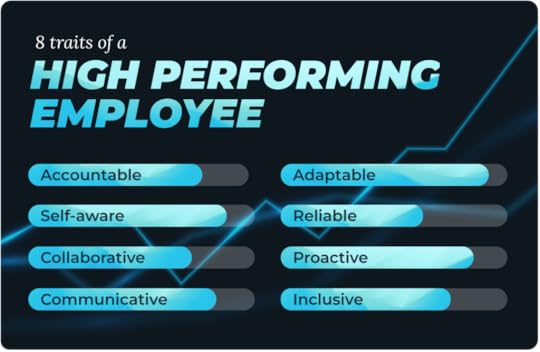 Accountability
AccountabilityWhen your team members have a strong sense of purpose and belonging at work, they’re more likely to take ownership of their role and responsibility to achieve success—which is the foundation for what a high-performer is made of. While this is a natural skill for some, most workplace accountability stems from leaders taking the time to develop it in their workforces.
To develop accountable employees, managers and employees must work together to establish clear lines of responsibility to ensure everyone has a strong idea of what they own. Without accountability at work, the lines between roles and responsibilities get blurred, resulting in unmet expectations and broken commitments. High-performing employees hold themselves accountable for their work, ultimately benefiting the overall team’s success.
Accountable employees tend to ask leaders and peers questions like:
How can I better support you in your work?What could I have done better to help you achieve your goals?Have I communicated clearly? How could I improve as a collaborator and team player?Have I applied feedback you’ve given effectively? How does my work impact your work?What do you think are my strengths and weaknesses, and how can I improve?What feedback do you have for me on how I can be a more effective teammate?Is there anything I can do to better support you and the team?This allows them to maintain strong relationships and achieve the goals set out as part of their role.
Self-awarenessThere are two key reasons why self-awareness goes hand-in-hand with high-performance. When a person is aware of their own strengths and weaknesses, it helps them define their role within a team. They’re confident in their areas of expertise, but know where they’ll need to seek the support of others to get the job done and fill in the gaps. (This is what they mean when they say hire people smarter than you).
Self-aware employees also have a greater understanding of their impact on others. When employees recognize how they affect their peers, they’re more likely to adjust their efforts to be more helpful towards them.
Fostering self-awareness means having:
More empathy for what might be driving the decisions and reactions of those around youBetter business results from decisions and relationships rooted more in thoughtfulness and less in impulsiveness or selfishnessAn improved focus on everyone your decisions impact, from your bosses to your subordinates to customers and prospectsMore persistence and confidence to work through problems when they ariseA strong example for coworkers to be self-reflectiveCollaborativenessCollaborativeness is a key trait of high-performing employees, and it centers around the ability to work effectively with others towards common goals. A high-performing employee recognizes that a collective effort of the team leads to better results than working in isolation, and welcomes diverse perspectives, knowing that different viewpoints lead to more innovative solutions.
A true high-performing employee puts a premium on authenticity and interpersonal relationships, as building strong connections with others is the key to achieving goals together. After all, positive relationships made by collaborating with others can help us maximize the time we have at work to make us significantly more productive.
Take a look at this short video to see how high-performing employees at Outfit7 accelerated collaboration:
CommunicationCommunication is arguably one of the most important workplace skills—and it’s certainly one that all high-performers excel at. Clear communication aids in everything from setting expectations, working through challenges, managing resources, building trust, and so much more.
While some people are naturally effective communicators, it’s a skill that’s important to continuously evolve. A high-performer is able to recognize that they’re never “done” developing a skill, and may encounter situations that challenge their ability to communicate effectively. For leaders looking to nurture this skill in their employees, we’d suggest enabling them with tools and frameworks to help operationalize communication. Below are some examples of tools that can help in an employee’s day-to-day communications. Click through to download them for yourself.
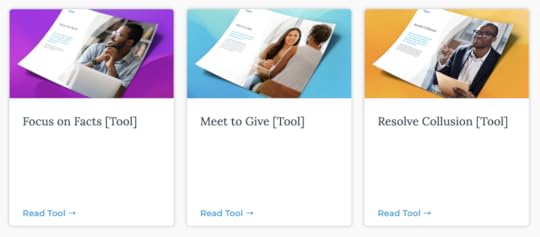 Adaptability
AdaptabilityTake a minute to think of the top performers you’ve worked with in your career. How did they respond to change?
Another commonality all high-performing employees share is the ability to adapt and effectively pivot. Adaptability is a skill that can be learned, and it starts with getting curious. Rather than immediately resisting or challenging something new, high-performing employees take the time to ask questions and evaluate different perspectives. They understand that in the working world, change is a constant, and fighting against it is unproductive for everyone involved.
Nurturing adaptability in employees starts with a shift in mindset. Challenge employees to stop and ask themselves, “How would I approach this challenge with an open mind? How would I act differently? What questions would I ask? What would I do?” While it can be tempting for even the highest performing employees to react from a place of frustration or disregard, this exercise pushes employees to think differently.
This video about the team at Citrix is a great example of adaptability at work:
ReliabilityBeing reliable is directly related to trust and dependability—which are both critical to being a high-performer. If team members know they can rely on someone, they’re more likely to assign them projects, ask them for help, and trust their feedback. And those are the types of people we want on our teams.
One way to foster reliability is to operationalize check-ins between peers. Having regular check in time with one another not only helps us understand our impact, but also helps us identify where we can do better.
Encourage your team members to check in with their peers and ask these questions:
What are your biggest challenges right now?How have I made your job harder?What can I do differently to make your job easier?How often should we meet to ensure we’re both on track?Staying on top of the meetings and actioning on any feedback is a great way for employees to showcase their reliability and in turn become high-performers.
ProactivitySometimes we work with people who feel like they’re so ahead of the curve, it’s like they’re predicting problems before they happen. Being proactive at work is so closely tied to high-performance because it demonstrates initiative, foresight, and a commitment to driving positive outcomes for the larger team. Proactive employees don’t wait for instructions; instead, they anticipate needs, identify opportunities, and take the lead in solving problems.
Proactive employees make for a more efficient and innovative workplace, as they actively look for ways to improve processes and suggest solutions. But in order to develop this skill in your employees, you need to ensure that you’ve created a psychologically safe environment where people feel empowered to ask questions, challenge ways of thinking, and present alternative solutions.
MotivationMotivation at work is the driving force behind individual and team efforts. Motivated employees are more likely to set and achieve challenging goals, and persist in the face of challenges—making it a top quality of a high-performing employee.
Like many of these qualities, motivation can be intrinsic, but it doesn’t have to be. As a leader, you can foster motivation on your team by:
Setting clearly defined goalsProviding autonomyShowing appreciation Encouraging skill developmentFacilitating opportunities for growthAsking for (and listening to) feedbackThe enthusiasm and passion of a high-performing employee not only contribute to their personal job satisfaction, but also positively impact team dynamics and organizational culture.
How does mindset impact employee performance?There is one common characteristic across top performers at work: an outward mindset.
We found that the eight traits of a top performer outlined above consistently correlate to working with an outward mindset. When employees have an outward mindset—seeing others as valuable contributors with their own goals and challenges—it results in a more positive and effective work environment for everyone.
For example, an employee with an outward mindset will likely actively seek ways to support and assist colleagues—recognizing that the collective success of the team is essential. There are plenty of ways to do this, like voluntarily taking on additional tasks to lighten a teammate’s workload, or offering support when a colleague is facing something difficult at home. By adjusting their efforts to make the work of others easier, this way of working contributes to a more collaborative atmosphere that enhances not just individual performance, but overall team performance.
This mindset, of course, is most effective when modeled by leadership. Like all of the traits mentioned in this blog post, this mindset is something that can be actively nurtured and developed within every individual, organization-wide. Here’s a look at how it starts:
Developing high-performing employeesWhile some employees are natural top performers, there are also a number of external factors at play that can influence employee behaviors at work—many of which, you as a leader can influence. Take a look at your team and see where you can help nurture employees, and just watch how their performance changes.
For more on how leaders can drive change at their organizations, download a copy of The Leadership Gold Standard: A Blueprint to Culture Transformation from the Top Down.
The post 8 traits of a high-performing employee appeared first on Arbinger.
January 3, 2024
How training and development can boost team performance
Organizations today have a unique set of challenges to face, with skill development topping the list. Arbinger’s 2024 workplace trends report revealed that 52% of professionals see skill development as a major hurdle for their organization, closely trailed by leadership development at 39%. While there are countless benefits of training and development, in this blog post, we’re going to explore how it helps boost team performance and makes your organizational culture stronger.
Benefits of training and development for your teamOnly 20% of those who participated in our workplace trends survey rated the training and development at their company as excellent. But those who did see morale and engagement as less of a challenge, also see retention as less of a problem area, and have higher rates of efficiency and innovation.
The data proves that an effective approach to training and development can improve larger team objectives in a big way. Just take a look at this chart to see what employees said most needed to be improved at their organizations:

Now let’s look at how training and development can improve just some of these critical business areas.
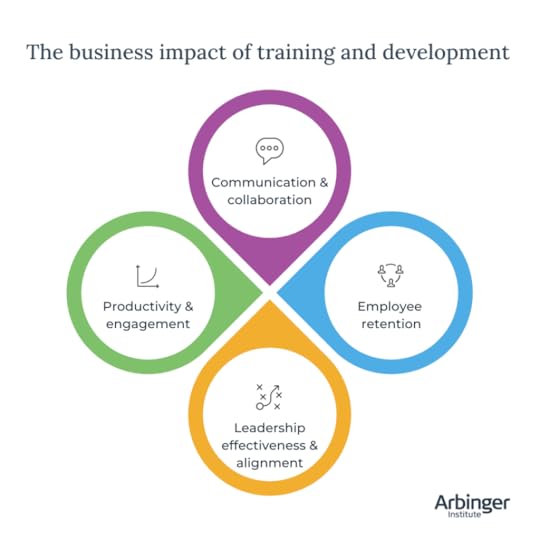
Employee retention: When organizations provide opportunities for continuous learning, employees are more likely to feel valued, making them more inclined to stay and grow with your organization. The benefits of training and development are rewarding for both employees and leaders: training programs not only enhance competencies, but also demonstrate a commitment to employees’ professional growth. On top of that, well-trained employees are better equipped to handle challenges and make a meaningful impact in their roles.
Internal communication and collaboration: With the right training, employees gain a deeper understanding of their potential—and in turn, the impact they’re able to make on your organization and those around them. A culture of continuous learning promotes self-awareness, encouraging employees to take ownership of their professional development and responsibility for their contributions in their day-to-day working relationships. This not only improves individual performance, but ultimately cultivates a workforce that’s proactive, responsible, and committed to achieving organizational goals together.
Productivity and engagement: One of the benefits of training and development is that it can significantly enhance employee productivity by equipping your team with updated skills, knowledge, and even performance tools to help them do their jobs more effectively. The right training can empower employees to become more proficient in their roles, leading to increased efficiency, engagement, and output.
Enhanced leadership effectiveness and alignment: Training and development programs enhance communication, decision-making, and strategic thinking—which are critical skills when it comes to both new manager training and aligning existing leaders. With leadership training, employees can learn how to guide projects and teams more effectively, and adapt to evolving business challenges. Investing in training is crucial for organizations looking to develop the leaders of tomorrow, as it helps ensure a pipeline of skilled and capable individuals who can drive innovation and navigate complex problems.
Creating a culture of continuous improvement and development ensures employees are continuously motivated and engaged in their work. This type of culture is fostered through:
On the job trainingCoachingMentorshipProviding tools and frameworksLeading by exampleSharing ideas Giving regular feedbackWhy is training important for team performance?While only 27% of the employees we surveyed feel strongly that their organization provides adequate growth and development opportunities, those who report higher rates of job satisfaction are over 5x more likely than others to agree strongly. It’s clear that training and development significantly contributes to job satisfaction.
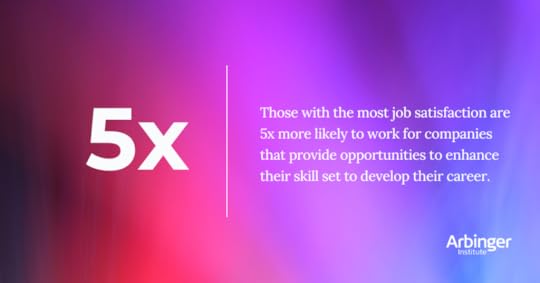
Aside from benefiting your overall team performance, making the investment in training and development provides a performance boost for each individual employee. Training and development plays a critical role in ensuring employees are well-equipped to handle their jobs, feel a sense of support, value, and competence, and have opportunities for career advancement.
When employees feel valued and useful, it creates a positive and supportive work environment that fosters trust and loyalty. Feeling valued means that employees perceive their contributions as meaningful and recognized by their employer and teammates, which both boosts morale and reinforces their sense of purpose and worth within the organization. Feeling appreciated and having a genuine impact also establishes a strong foundation for trust, loyalty, and a collaborative team culture, as they feel an integral part of the collective success and goals of the workplace.
Employees who are engaged, motivated, and innovative want to excel and help achieve your business goals. But it’s leadership’s job to create an environment conducive to that, where everyone feels safe to think out loud and share their ideas. By establishing a culture of continuous learning and development, you’re showing your employees that you’re invested in their growth. Which in turn, will inspire them to invest in your organization’s growth.
Recognizing the humanity in your team as the key to successWhen organizations take the time to recognize that individuals are not cogs in a machine, but rather unique contributors with passions and potentials is the key to unlocking limitless possibilities. When people feel acknowledged, heard, and valued, they become dedicated catalysts for change.
Interested in learning more about how you can bring more humanity to work in 2024? Get a copy of our 2024 workplace trends report .
 hbspt.cta.load(23346030, 'bdeb1367-d9ea-4975-abcd-0eec52f20413', {"useNewLoader":"true","region":"na1"});
hbspt.cta.load(23346030, 'bdeb1367-d9ea-4975-abcd-0eec52f20413', {"useNewLoader":"true","region":"na1"}); The post How training and development can boost team performance appeared first on Arbinger.
A new approach to employee performance reviews
Performance reviews have been a long-time standard procedure for issuing feedback to employees. But employees and managers alike find this one-way, annual feedback system—based solely on output and meeting predetermined expectations—is ineffective.
Arbinger’s 2024 Workplace Trends Report revealed that only one-third of professionals say they value, actively participate in, and use performance reviews for improvement. Another 38% find them somewhat helpful, leaving nearly 30% saying they are not useful or a complete waste of time.
The fact of the matter is, most organizations’ approach to performance reviews is outdated and broken. Some organizations, however, have had luck with a different approach that’s transformative for both employees and managers alike. In this post, we’ll explore what that looks like and how you can implement something similar on your team.
Developing accountable employees through performance reviewsEvery workplace wants accountable employees. But rather than making it a manager’s job to hold people accountable, what you really want to do is develop accountable people. In the long run, this helps everyone. Here’s how you do it:
To develop accountable employees, managers and employees must work together to establish clear lines of responsibility. This ensures everyone has a strong understanding of their job roles and responsibilities. Without employee accountability, your workplace will suffer from an accountability gap—which is when people aren’t sure what they’re responsible for, resulting in unmet expectations, bad behavior, and broken commitments.
Accountable employees feel a sense of ownership over their work—and research suggests that sense of ownership not only influences an employee’s feelings toward their organization; it actually makes us more helpful and generous toward others as well.
Some ways to foster accountability in employees include:
Setting clear expectations and goalsTurning mistakes into learning experiencesHave performance check-ins oftenEnsure everyone understands their impact What do high-value performance reviews look like?Our research found that those who value employee performance reviews follow a different structure than those who don’t. Employees who find performance reviews valuable are more likely to be having discussions that include feedback for leadership, training and growth opportunities, and their impact on both company goals as well as their peers.

Rather than viewing performance reviews as daunting, one-sided discussions during which leaders evaluate their subordinates, we have the opportunity to reframe them into something much more productive for everyone involved.
If you’re looking to refresh the way your organization conducts employee performance evaluations, consider integrating the following discussion points into your performance conversations. Here’s how to incorporate some of the most impactful discussion areas into your employee reviews:
Company goals/initiatives: Employees feel more connected to company goals and initiatives when they understand the role they play in achieving them. By discussing company goals with employees and helping them understand how exactly their day-to-day work influences them, you’ll foster more motivated and engaged employees.Feedback for leadership: Our survey found that employees who have the opportunity to provide feedback for leadership feel more heard than others. Rather than one-way directions and orders coming from the top, employees feel valued when they can share their ideas and opinions with leadership too.Growth and training opportunities: Rather than simply telling employees what they’re doing right or wrong during reviews, performance reviews are a great time to discuss skill building and training opportunities that will help them get to their desired next step.Impact on peers: When employees are encouraged to explore their impact on their peers by discussing their goals and challenges, they’re more likely to be accountable, helpful, and cooperative when it comes to team projects. People who discuss their impact on their peers during performance reviews are 2x more likely to rate the performance of their organizations as excellent in several areas than those who do not discuss their impact on their peers in performance review discussions.Try Arbinger’s Impact Check-In tool as a way to guide your impact check-in conversations with your peers.
 The power of ongoing feedback
The power of ongoing feedback Ongoing feedback is a cornerstone of developing accountable employees. However, less than one-quarter of employees report receiving ongoing feedback about their overall job performance, career and development opportunities, personal development and wellbeing, and compensation.

It’s also important to think about how often you’re having performance discussions, as the frequency of performance evaluations is as important as the content discussed during them. A monthly basis is typically an agreed-upon cadence for both managers and employees. Checking in monthly helps keep everyone on track, while also developing the relationship between manager and employee. The more often check-ins happen, the more likely employees are to be open and honest, knowing that their check-ins are a safe space.
Try this approach to performance reviewsEmpower employees to take control of their own performance by enabling them to schedule their own check-in conversations. This opens up a two-way dialogue between managers and employees, rather than having these discussions structured as one-way performance analyses. It’s important to talk about both effort and impact related to specific priorities so employees can understand exactly how they’re doing and managers can track their progress.
It’s also critical to bring “impact” into the conversation because it helps managers and employees get a more holistic view of performance, rather than just output. For example, an employee might be getting all of their tasks done, but perhaps by doing so, they’ve gotten in the way of other employees, created challenges for others, and affected other priorities. This is why employees should also be encouraged to have regular Impact Check-In meetings with their peers. This can help illuminate challenges an employee is creating—oftentimes, that they may not even realize!
This two-pronged approach is how you’re going to see actual results on team performance from reviews, rather than just checking a box.
Here’s how you can structure a productive performance conversation:
Employees prepare for, schedule, and conduct the check-in meeting. We recommend a monthly cadence to keep them as actionable as possible.Employees rate themselves and their impact on their peers. We advise employees to meet with teammates regularly to evaluate their impact on others. The employee shares their action plan for improvement and/or next steps. Both the direct report and their manager have the opportunity to share feedback and gain a better understanding of where they could be more helpful to each other.Bookmark this template to try this structure with your team.
We’ve worked with the team at GVEC to revamp their approach to employee reviews. See how it worked for them here:
Looking ahead
A shift in the way your organization conducts performance reviews can be transformational for not only your employees—but your business as a whole. When employees feel a sense of ownership over their own performance and recognize that their manager is invested in their growth, they’re much more likely to innovate and outperform.
We dig deeper into this topic (and more) in our 2024 trends report. Download a copy here.
 hbspt.cta.load(23346030, 'bdeb1367-d9ea-4975-abcd-0eec52f20413', {"useNewLoader":"true","region":"na1"});
hbspt.cta.load(23346030, 'bdeb1367-d9ea-4975-abcd-0eec52f20413', {"useNewLoader":"true","region":"na1"}); The post A new approach to employee performance reviews appeared first on Arbinger.
Arbinger Institute's Blog
- Arbinger Institute's profile
- 375 followers



